Hatha Yoga
Table of Contents
Hatha Yoga Definition
- The Sanskrit word “hatha” literally means “stubborn.”
- Thus, Hatha Yoga refers to the disciplined practice of yoga without the five senses or the mind getting in the way.
- The majority of people simply connect Hatha Yoga with postures.
- However, to reach the sublime condition of samadhi, one must engage in the severe practice of asana, pranayama, dharana, and dhyana.
- The yogi escapes the illusion of form, time, and space when they reach samadhi.
- Asana is only one of this path’s six disciplines.
- Raja Yoga is the source of Hatha Yoga.
- It is the most straightforward form of Raja Yoga, devoid of the Yamas and Niyamas.
- To put it simply, Hatha Yoga includes all of the yoga positions and pranayama exercises.
- Thus, you are engaging in Hatha if you perform any yoga poses or pranayama activities.
- Given that Hatha Yoga helps to detoxify our solar (Pingla) and lunar (Ida) pathways, it’s fascinating to see that some instructors describe it as Ha (sun) + Tha (moon) yoga.
Tools in Practice
- Asanas – to take command of one’s body
- Pranayama – to master breathing control
- Mudra – to work with and awaken pranas, or subtle energies
- Bandhas – to open up the energy centers, or chakras.
- Kriyas – to cleanse internal organs
- Mantras – to exert mental control
Introduction
- About 2,000 years ago, a set of spiritual breathing exercises led to the development of yoga in India.
- Although the term “Hatha” dates back to the 11th century, it wasn’t until the late 19th century that it was introduced to America.
- It became widely used in the 1960s.
- Because yoga promotes mind-body wellbeing and physical health, around one in seven Americans do it these days.
- According to research, hatha yoga can help people reduce stress, encourage healthy behaviors, enhance mental well-being, reduce back and arthritic pain, and even help them stop smoking.
- The National Center for Integrative and Complementary Health.What you should know about yoga.
What Is Hatha Yoga?
- The primary goals of Hatha yoga include posture and breathing exercises, which are historically used to access essential energy.
- Hatha is the Sanskrit word for force.
- Classes typically last between 45 and 90 minutes and consist of breathing exercises, yoga positions, and meditation. The practice integrates the mind, body, and spirit.
- Both Buddhist and Hindu writings from the first century mention the use of breathing practices related to hatha yoga. However, it took another millennium for the application of yoga postures, or asanas, and breath control to be documented as a means of enhancing vital energy.
History of Hatha Yoga
- The 15th century saw the development of classical Hatha yoga, which contained instructions on how to perform asanas correctly, pranayama, breathing exercises, mudras, hand gestures, and meditation for spiritual development.
- As a spiritual discipline, Hatha yoga was introduced to America in 1893 by Swami Vivekananda.
- Yoga evolved into a flowing form that was more physically than spiritually focused in the 1920s when practitioners blended asanas with other common exercises of the day.
- Hathai yoga was first popularized in millions of American homes in the 1950s because of Richard Hittleman’s hit television show “Yoga For Health.”
- A few years later, transcendental meditation and yoga were combined by the Maharishi Mahesh Yogi, who served as The Beatles’ spiritual guru.
- This combination gave yoga a whole new meaning and quickly gained popularity.
- These days, hatha yoga is widely recognized as a mind-body wellness practice that is both physically and spiritually based.
What is a hatha yoga class like?
- Each instructor and class will have a different structure for their hatha yoga sessions, although most courses start with a “centering exercise”.
- This can comprise easy guided meditation, breathing exercises, or even simply a silent moment, and it can be done while sitting or lying on your back.
- After that, the instructor could lead you through a sequence of postures that progress toward a “peak pose” (imagine twisting, bending, and folding).
- To ensure that you leave the class feeling balanced, you might then perform a sequence of exercises to counteract some of the prior positions.
- In addition to emphasizing breathwork timed to movements (usually at a slower speed than vinyasa), hatha sessions may also incorporate chanting and meditation.
- Whatever structure your hatha class uses, be aware that you are not required to perform every posture in the sequence or to maintain a stance for the duration of the teacher.
- It’s OK to switch up the stances at any point or to just sit or stand silently.
- “You can take a break anytime you need to.”
- The only piece of equipment you absolutely must have is a yoga mat.
- Expert advice: Before bringing a brand-new mat to class, wash it at home.
- “Most mats have a factory coating on them that’s slippery,” meaning you’re probably going to slide about if you use it right out of the box or store.
Hatha yoga is excellent for both novices and seasoned practitioners
- Hatha is a fantastic kind of yoga for beginners since it is often slower-paced and places more attention on teaching poses than on just doing them.
- Hatha may also be beneficial for those who struggle with concentration.
- Poses tend to be structured such that you are less likely to have daydreams.
- You are repeatedly taken back to a previous activity.
- You should be a good fit for Hatha as long as your physical condition is somewhat decent.
- Consult your doctor before using Hatha if you have any preexisting medical issues (such as glaucoma, a ruptured disk, or a risk of blood clots).
- What if you’re expecting? Although there are pregnant yoga courses available, know that yoga is typically safe. However, it’s definitely best to avoid certain positions.
- Once more, it’s usually a good idea to discuss your options with your doctor in advance to see what works best for you.
Classical Hatha Yoga
- Despite occasionally being taught in ways that leave a lot to be desired, yoga has been popular in the West for twenty years, and no matter where you live or what you do, its health advantages are indisputable.
- The number of persons who practice yoga is now significantly increasing.
- This could just be the result of the scientific community gradually realizing the breadth and complexity of this. However, if the wrong, perverted kind of yoga gains traction, within fifteen years, research from science will unequivocally reveal just how detrimental it is to people, and that will be the end of it.
- Thus, it is crucial that we revive traditional yoga in its original form.
- It’s a very great process to transform your system into an amazing vessel, an amazing tool to receive the Divine if it’s taught in a good setting with a certain humility and inclusivity regarding the entire process.
Hatha Yoga: Directing Your Energies
- We adjust the system and work with the energy to guide you into the oneness and boundlessness that is the experience of yoga.
- One component of this is the physical posture.
- Hatha Yoga or yogasanas are about understanding the mechanics of the body, setting up a particular atmosphere, and then using the body or body postures to push your energy in various ways.
- Hatha yoga isn’t an activity.
- A position is called an asana.
- That’s one asana if I sit in that manner.
- It’s a different asana if I sit in a different manner.
- Thus, many asanas are conceivable.
- Of all the poses that the human body is capable of, eighty-four basic poses have been recognized as yogasanas.
How Hatha Yoga is different from other styles?
Hatha yoga is an old kind of yoga, and it differs greatly from other contemporary yoga types in several ways:
- Asanas in Hatha are kept still for one to five minutes.
- The majority of contemporary looks are dynamic and adopt fleeting stances.
- The metabolism is lower in Hatha than it is in other forms of yoga.
- Asanas in Hatha postures emphasize the spine and internal organs, whereas asanas in other systems emphasize the muscles and joints.
- The body experiences less abrasion in Hatha than in other disciplines.
- Compared to other forms, Hatha requires less oxygen.
- In Hatha, motion is less important than mental and physical stillness.
Top Hatha Yoga books
Although there are several works on the subject, the following are the most well-known:
- Hatha Yoga Pradipika by Pancham Singh
- Patanjali Yoga Sutras by Swami Satchindananda
- Hatha Yoga for Instructors & Practitioners, by Kalyani Hauswirth Jain and Ram Jain
- Swami Vishnu Devananda’s Book of Yoga: Complete Illustrated
Health Benefits of Hatha Yoga
- Yoga enthusiasts have long praised the relaxing and health-promoting effects of the practice.
- Many of these beliefs are now supported by science.
- After reviewing hundreds of peer-reviewed studies, the National Center for Complementary and Integrative Health at the National Institutes of Health discovered evidence that suggested yoga could be helpful for the following conditions, even though the majority of the studies were conducted on small numbers of participants.
- Anxiety and depression: Practicing yoga might help reduce general anxiety and depression symptoms, but it might not be helpful for mental health issues that have been formally identified.
- After reviewing 68 published research, the NCCIH was unable to discover any solid proof that yoga is helpful in treating PTSD, depression, or anxiety disorders.
Arthritis and fibromyalgia: The NCCIH states that there is insufficient evidence to suggest that yoga is beneficial for treating rheumatoid arthritis, osteoarthritis, and fibromyalgia.
Back pain: Yoga is suggested by the American College of Physicians as a non-pharmacological treatment for back pain. According to an Agency for Healthcare Research and Quality analysis of eight studies published in 2018, yoga has both short- and intermediate-term advantages for reducing low back pain and improving function, and its effects are comparable to those of other forms of exercise.
Balance: Eleven of the fifteen research that the NIH analyzed indicate that yoga helps persons in good health achieve better balance.
Emotional health: In ten of the fourteen research that the NCCIH assessed, yoga was found to have a favorable effect on mental health, namely in terms of enhancing resilience or overall mental well-being.
Menopause: Hot flashes and other physical and psychological menopausal symptoms can be alleviated by yoga, according to an NCCIH evaluation of over 1,300 trial participants.
Mindfulness: In a 2018 study of 1,820 young adults, which was published in the International Journal of Behavioral Nutrition and Physical Activity, participants linked regular yoga practice to increased mindfulness, motivation to engage in other types of exercise and eat healthier foods, and the support of a community of health-conscious yoga practitioners.
Multiple sclerosis: According to the NCCIH, yoga has been demonstrated to improve mood and tiredness in MS patients in the short term, but it had no effect on quality of life, muscular function, or cognitive performance.
Neck pain: In the journal Medicine, a meta-analysis from 2019 with 10 trials and 686 participants revealed that yoga can improve neck range of motion and lessen the severity and impairment of neck pain.
Sleep: Yoga has been shown in several NCCIH-reviewed research to enhance both the length and quality of sleep. Yoga has been shown to improve sleep in a number of populations, including women experiencing menopausal symptoms, older persons, pregnant women, and those with arthritis.
Stress management: According to NCCIH, yoga was found to be beneficial for stress-related physical or psychological parameters in 12 of the 17 analyzed research.
What to Expect in Yoga Class
- Nowadays, there are several yoga types to select from. A class that just says “yoga” is probably of the Hatha kind.
- Hatha yoga is regarded as a peaceful kind of yoga that is excellent for beginners and emphasizes static positions.
- It may nevertheless be psychologically and physically taxing, despite its soft nature.
- For optimal comfort and ease of movement, practitioners should wear sports bras and close-fitting athletic clothing.
- Although the duration of each lesson varies according to the teacher, most classes run between 45 and 90 minutes. Usually, classes begin with a mild warm-up, progress to more physically demanding postures, and conclude with a brief meditation.
- This is an outline of a normal class:
Breathing: The majority of Hatha yoga lessons begin with a pranayama or breathing exercise. Your instructor will keep reminding you to pay attention to your breath as you move through the poses and could even suggest some other breathing exercises.
Poses: Yoga positions, often referred to as postures or asanas, are a sequence of exercises that enhance strength, flexibility, and balance. The complexity of poses varies, ranging from lying flat on the floor to really difficult postures. Your teacher can help you modify a position if it becomes too challenging at any point throughout the session.
Meditation: Most sessions conclude with a brief meditation period. Your teacher may advise you to lie on your back and cover yourself with a blanket for this time of silent thought. Tibetan singing bowls or guided meditations may be used by certain instructors.
Conclusion
Stretching, relaxing, and releasing stress are all possible in hatha lessons, which are a great complement to both hectic lives and intense exercise regimens. Don’t give up on yoga entirely if a Hatha class seems too sluggish or passive for your style.
There are yoga poses that are more athletic and faster-paced. If flow, vinyasa, or power yoga are more your style, give them a try.
FAQ
Hatha yoga is performed more slowly, emphasizing the breath, deliberate movements, and stretching. Vinyasa yoga emphasizes breathing in harmony with your movements, which are usually performed at a quicker speed. You should anticipate staying in a continuous flow of movements during a vinyasa practice.
In Hatha yoga, deliberate breathing and posture are highly valued. Another significant benefit of this style of yoga is strengthening the core, which is essential for proper posture. There are hundreds of postures in Hatha, including popular ones like Standing Forward Bend and Downward-Facing Dog.
The main reason yoga is performed nowadays is for its potential to reduce stress. Hatha yoga is a popular stress-reduction technique because it promotes both physical and mental relaxation. Furthermore, a lot of anxiety disorders and clinical depression are thought to have stress as a prelude.
‘Hatha’ yoga classes usually consist of a series of physical postures called yoga poses combined with breathing exercises. Generally speaking, they are practiced slower and with more static holds than an Ashtanga or Vinyasa flow class. That’s exactly how we characterize our Hatha yoga courses on EkhartYoga.
Hatha yoga is regarded as a peaceful kind of yoga that is excellent for beginners and emphasizes static positions. It may nevertheless be psychologically and physically taxing, despite its soft nature. For optimal comfort and ease of movement, practitioners should wear sports bras and close-fitting athletic clothing.
Reference:
- Hatha Yoga – What is the meaning of Hatha Yoga? (2022, April 26). https://isha.sadhguru.org/yoga/yoga-articles-hatha-yoga-asanas/what-is-hatha-yoga/
- What to Expect From a Hatha Yoga Class. (2023, July 10). Verywell Fit. https://www.verywellfit.com/what-is-hatha-yoga-3566884
- What Is Hatha Yoga? Definition, Benefits & What To Expect In A Class. (2020, May 25). Mindbodygreen. https://www.mindbodygreen.com/articles/what-is-hatha-yoga
- Jain, R. (2023, September 18). What Is Hatha Yoga & Its Benefits | Arhanta Yoga Blog. Arhanta Yoga Ashrams. https://www.arhantayoga.org/blog/what-is-hatha-yoga-philosophy-and-practice/

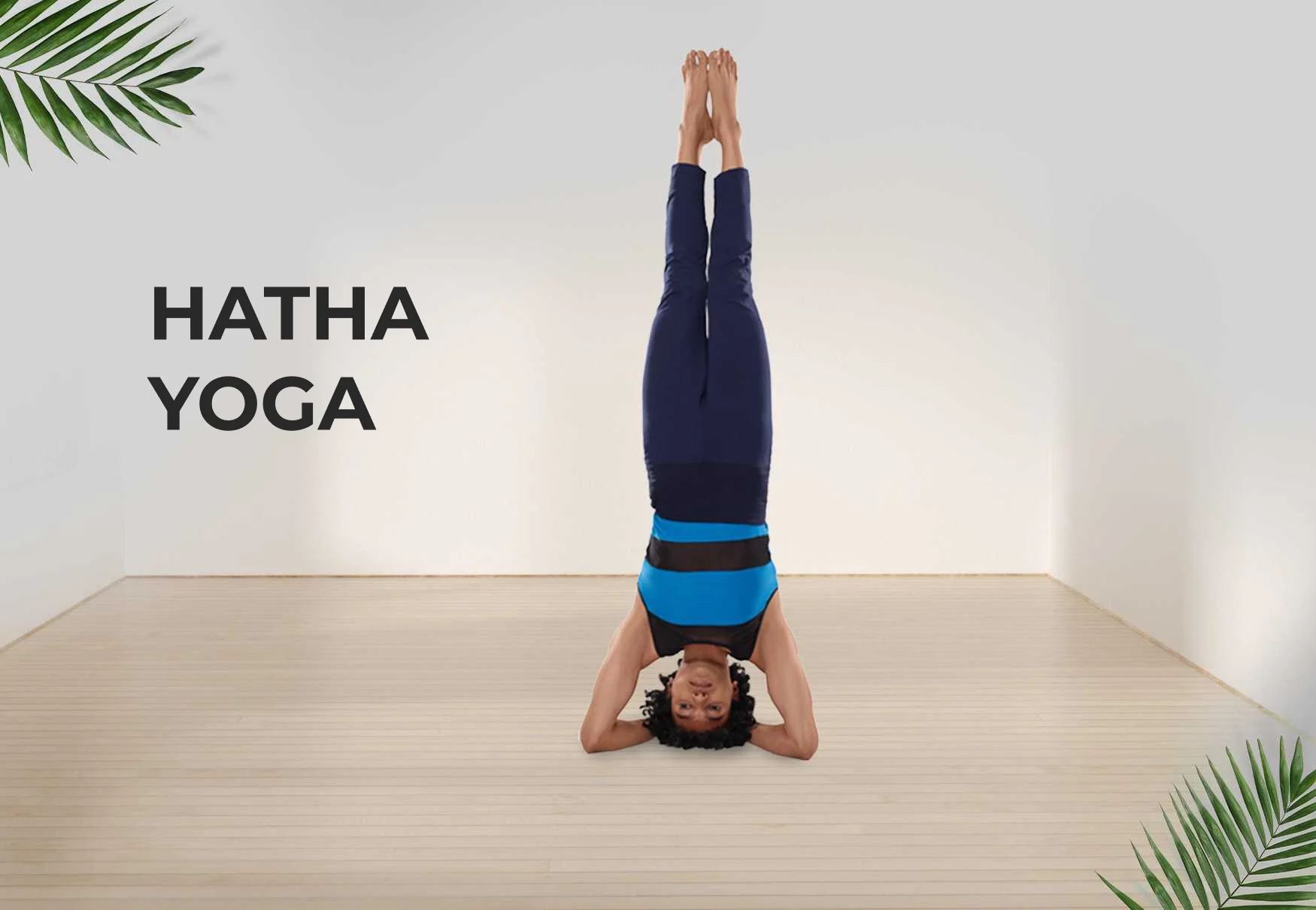
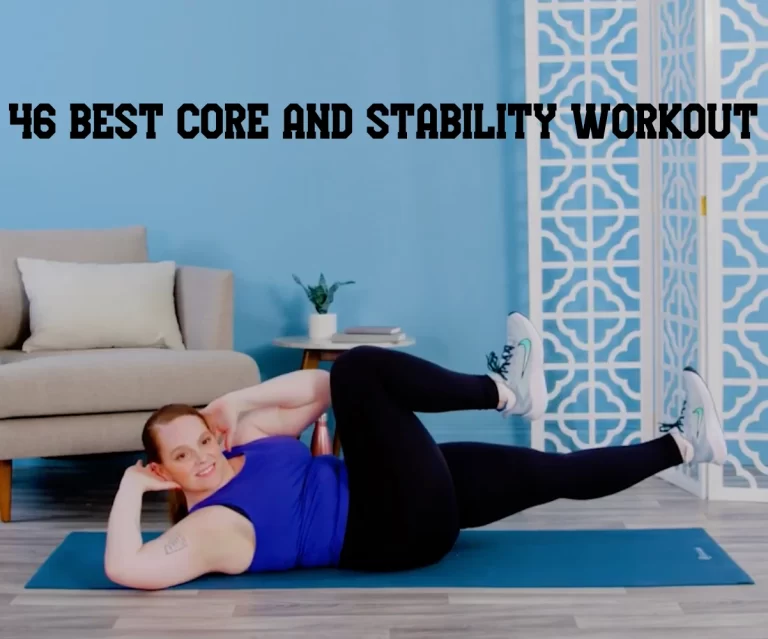
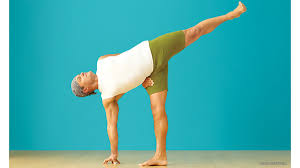
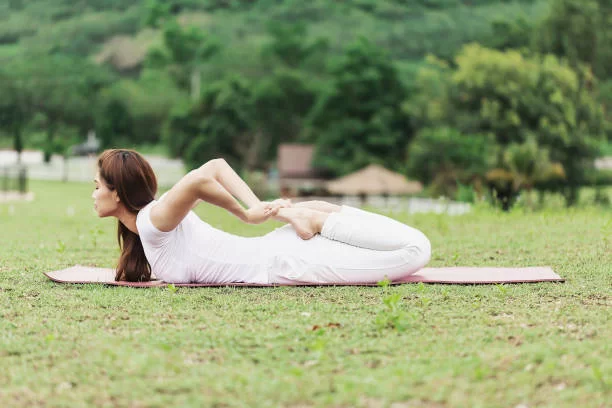
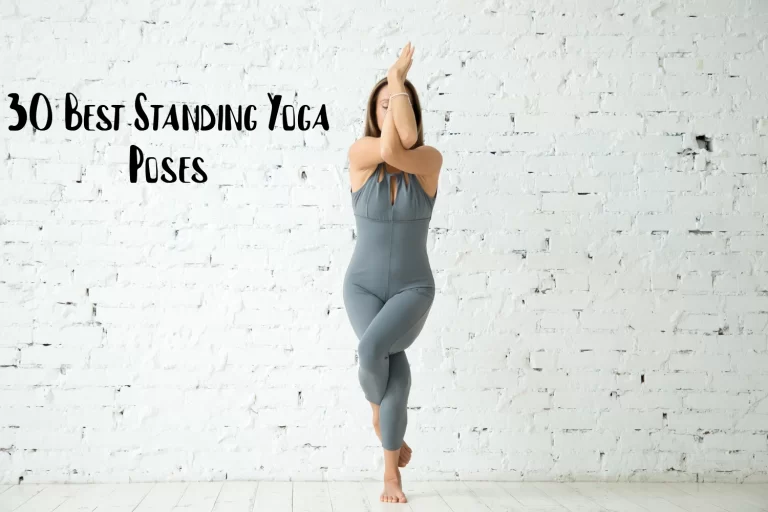


One Comment